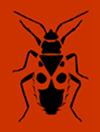四种不同饲料粒度对黄粉虫幼虫生长的影响(鞘翅目:黄粉虫科)
IF 1.2
3区 农林科学
Q2 Agricultural and Biological Sciences
引用次数: 1
摘要
饮食是影响黄粉虫生长和生命周期的最重要因素之一。粉虫饮食的化学和营养特性得到了很好的研究,而其物理特性几乎被忽视。本工作旨在研究四种不同饲料(麦麸、鸡饲料颗粒、磨碎的玉米粒和苜蓿干颗粒)的四种不同粒度(0–0.8、0.8–2、2–3和3–4 mm)的影响。根据饲料的不同,在实验基质上饲养四周大的幼虫四到六周。我们的研究结果表明,颗粒大小可以显著影响幼虫的生长,小于2毫米的颗粒可以改善除苜蓿颗粒外的所有饲料中的幼虫生长。当比较小于2毫米和大于2毫米的颗粒尺寸时,麦麸的最大幼虫重量略有不同(12%),但当玉米粒用作饲料时,最大幼虫重量增加了70%。不同饲料在生长速度、幼虫重量和幼虫重量变异性方面存在显著差异。平均体重达到100毫克的幼虫最快的是那些用麦麸饲养的幼虫,其次是鸡饲料和玉米粒。用苜蓿颗粒饲养的幼虫的平均体重没有达到60毫克。喂食麦麸、鸡饲料和苜蓿颗粒后,幼虫生长的变异性最低,喂食玉米粒后,幼虫的变异性最高。总之,饲料的类型(麦麸、鸡饲料和玉米粒)和颗粒大小(<2 mm)都是幼虫生长的重要决定因素。本文章由计算机程序翻译,如有差异,请以英文原文为准。
The effects of the particle size of four different feeds on the larval growth of Tenebrio molitor (Coleoptera: Tenebrionidae)
. Diet is one of the most important factors affecting the growth and lifecycle of Tenebrio molitor L. The chemical and nutritional properties of the diet of mealworms are well studied whereas its physical properties are almost neglected. This work aims to study the effects of four different particle sizes (0–0.8, 0.8–2, 2–3 and 3–4 mm) of four different feeds (wheat bran, chicken feed pellets, grounded corn kernels and alfalfa dried pellets). Four-week-old larvae were reared on the experimental substrates for four to six weeks depending on the feed. Our results indicate that particle size can signi fi cantly in fl uence larval growth and that particles smaller than 2 mm improve larval growth on all feeds except alfalfa pellets. The maximum larval weight was slightly different for wheat bran (12%) when comparing particle sizes smaller than 2 mm with greater than 2 mm but increased up to 70% when corn kernels were used as feed. Signi fi cant differences were found between the different feeds for growth rate, larval weight and variability in larval weight. The larvae that reached an average weight of 100 mg the fastest were those reared on wheat bran followed by chicken feed and corn kernels. Larvae reared on alfalfa pellets did not reach an average weight of 60 mg. The variability in larval growth was lowest when fed wheat bran followed by chicken feed and alfalfa pellets, and the highest variability was recorded when fed corn kernels. In conclusion, both the type (wheat bran, chicken feed and corn kernels) and particle size (< 2 mm) of the feed were important determinants of larval growth.
求助全文
通过发布文献求助,成功后即可免费获取论文全文。
去求助
来源期刊
CiteScore
2.30
自引率
7.70%
发文量
43
审稿时长
6-12 weeks
期刊介绍:
EJE publishes original articles, reviews and points of view on all aspects of entomology. There are no restrictions on geographic region or taxon (Myriapoda, Chelicerata and terrestrial Crustacea included). Comprehensive studies and comparative/experimental approaches are preferred and the following types of manuscripts will usually be declined:
- Descriptive alpha-taxonomic studies unless the paper is markedly comprehensive/revisional taxonomically or regionally, and/or significantly improves our knowledge of comparative morphology, relationships or biogeography of the higher taxon concerned;
- Other purely or predominantly descriptive or enumerative papers [such as (ultra)structural and functional details, life tables, host records, distributional records and faunistic surveys, compiled checklists, etc.] unless they are exceptionally comprehensive or concern data or taxa of particular entomological (e.g., phylogenetic) interest;
- Papers evaluating the effect of chemicals (including pesticides, plant extracts, attractants or repellents, etc.), irradiation, pathogens, or dealing with other data of predominantly agro-economic impact without general entomological relevance.

 求助内容:
求助内容: 应助结果提醒方式:
应助结果提醒方式:


